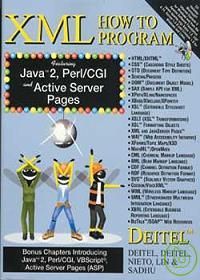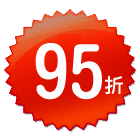- 定價127.00元
-
8
折優惠:HK$101.6

|
|
|
|
XML: HOW TO PROGRAM
|

|

沒有庫存
訂購需時10-14天
|
|
|
|

|
|
9780130284174 | |
|

|
|
DEITEL | |
|

|
|
全華科技 | |
|

|
|
2001年5月10日
| |
|

|
|
382.00 元
| |
|

|
|
HK$ 362.9
|
|
|
|
|

| |
|
|
|
|
| |
|
|
詳
細
資
料
|
* 叢書系列:大學資訊
* 規格:平裝 / 934頁 / 普級 / 單色印刷 / 初版
* 出版地:台灣
大學資訊
|
|
分
類
|
[ 尚未分類 ] |
同
類
書
推
薦
|
|
|
內
容
簡
介
|
Summary For XML programming courses and Internet/Webprogramming courses focusing on XML in ComputerScience, Computer Information Systems, ManagementInformation Systems, Information Technology, andBusiness Departments. This new book in the Deitels’ Howto Program series is a comprehensive guide toprogramming in XML. It teaches students how to use XMLto create customized tags and includes several chaptersthat address standard custom markup languages forscience and technology, multimedia, commerce, and otherfields. The authors include a concise introduction toJava, providing students with the essentials of thisprogramming language to enable them to work effectivelywith XML. The book also includes cutting edge topicssuch as XQL, SMIL and VoiceXML as well as a real-worlde-Commerce case study. A complete chapter onWeb-accessibility that addresses VoiceXML is alsoincluded. Features Signature “Live CodeApproach”—Language features are presented in thecontext of a wide variety of complete working programs.Features thousands of lines of code in hundreds ofcomplete working programs. Enables readers to confirmthat programs run as expected. Readers can alsomanipulate the code from the CD-ROM in the back of thebook or from the book’s Companion Website(www.prenhall.com/deitel). Outstanding, consistent andapplied pedagogy—Icons throughout identify SoftwareEngineering Observations; Good Programming Practices;Common Programming Errors; Portability Tips;Performance, Testing and Debugging tips. Provideshundreds of valuable programming tips and facilitateslearning. Extensive set of interesting exercises andsubstantial projects. Students can apply what they’velearned in each chapter. CD-ROM with each text. Sourcecode for all the book’s examples, hyperlinks toPerl/CGI demos and Internet resources and the followingsoftware: Internet Explorer 5, Amaya & Browser (webbrowsers), Cocoon, Jakarta Tomcat (web servers), Xalan,FOP (XSLT Applications), Xerces, Crimson (Parsers).Also available with the Multimedia Cyber ClassroomCD-ROM—In The Complete XML Training Course, StudentEdition (0-13-089556-3). Provides additional hands-onexperience and study aids for a minimal cost. Includesmany hours of detailed, expert audio descriptions of“live code,” hundreds of self-review questions (halfwith answers), hundreds of programming exercises (halfwith answers), hundreds of tips that are marked withicons and show how to write XML code that’s portable,reusable, and optimized for performance, and full-textsearching and hyperlinking. Table of Contents (NOTE:Each chapter begins with Objectives, an Outline, and anIntroduction and ends with a Summary, Terminology, asummary of all the programming tips in the chapter,Self-Review Exercises, Self-Review Exercise Answers,and Exercises.) 1. Introduction to the Internet andWorld Wide Web. Introduction. World Wide Web Consortium(W3C).
History of the Internet. History of the WorldWide Web. Future of Computing. History of SGML. XML andXML How to Program. A Tour of the Book. W3C XMLResources. Internet and World Wide Web Resources. 2.Introduction to HyperText Markup Language 4: Part I.Introduction. Markup Languages. Editing HTML. CommonElements. Headers. Linking. Images. Special Charactersand More Line Breaks. Unordered Lists. Nested andOrdered Lists. Internet and World Wide Web Resources.3. Introduction to HyperText Markup Language 4: PartII. Introduction. Basic HTML Tables. Intermediate HTMLTables and Formatting. Basic HTML Formsontent. MaximizingHTML Forms. Internal Linking. Creating and Using ImageMaps. <> Tags. frameset Element. Nested framesets.Internet and World Wide Web Resources. 4. CascadingStyle Sheets? (CSS). Introduction. Inline Styles.Creating Style Sheets with the style Element.Conflicting Styles. Linking External Style Sheets.Positioning Elements. Backgrounds. Element Dimensions.Text Flow and the Box Model. User Style Sheets.Internet and World Wide Web Resources. 5. CreatingMarkup with XML. Introduction. Introduction to XMLMarkup. Parsers and Well-Formed XML Documents. Parsingan XML Document with msxml. Characters. Markup. CDATASections. XML Namespaces. Case Study: A Day PlannerApplication. Internet and World Wide Web Resources. 6.Document Type Definition (DTD). Introduction. Parsers,Well-Formed and Valid XML Documents. Document TypeDeclaration. Element Type Declarations. AttributeDeclarations. Attribute Types. Conditional Sections.Whitespace Characters. Case Study: Writing a DTD forthe Day Planner Application. Internet and World WideWeb Resources. 7. Schemas. Introduction. Schema vs.DTDs. Microsoft XML Schema: Describing Elements.Microsoft XML Schema: Describing Attributes. MicrosoftXML Schema: Data Types. W3C XML Schema. Case Study:Writing a Microsoft XML Schema for the Day PlannerApplication. Internet and World Wide Web Resources. 8.Document Object Model (DOM?). Introduction. DOMImplementations. DOM with JavaScript. Setup. DOMComponents. Creating Nodes. Traversing the DOM.
CaseStudy: Modifying the Day Planner Application to Use theDOM. Internet and World Wide Web Resources. 9. SimpleAPI for XML (SAX). Introduction. DOM vs. SAX. SAX-BasedParsers. Setup. Events. Example: Tree Diagram. CaseStudy: Using SAX with the Day Planner Application. SAX2.0. Internet and World Wide Web Resources. 10. CaseStudy: XmlMessenger Program. Introduction. Setup.Overview: Server Side of XmlMessenger. Implementation:Server Side of XmlMessenger. Overview: Client Side ofXmlMessenger. Implementation: Client Side ofXmlMessenger. 11. XML Path Language (XPath).Introduction. Nodes. Location Paths. Node-Set Operatorsand Functions. Internet and World Wide Web Resources.12. XSL: Extensible Stylesheet Language Transformations(XSLT). Introduction. Setup. Templates. CreatingElements and Attributes. Iteration and Sorting.Conditional Processing. Copying Nodes. CombiningStylesheets. Variables. Case Study: XSLT and XPath.Internet and World Wide Web Resources. 13. XSL:Extensible Stylesheet Language Formatting Objects.Introduction. Setup. Examples of XSL Formatting-ObjectDocuments. Lists. Internet and World Wide WebResources. 14. XLink, XPointer, XInclude and XBase.Introduction. XML Linking Language (XLink). XLink andDTDs. XML Pointer Language (XPointer). XML Inclusions(XInclude). XML Base (XBase). Internet and World WideWeb Resources. 15. Case Study: Message Forum withActive Server Pages.
Introduction. Setup and MessageForum Documents. Forum Navigation. Adding Forums. ForumXML Documents. Posting Messages. Other HTML Documents.Internet and World Wide Web Resources. 16. Server-SideJava Programming. Introduction. Cocoon. ExtensibleServer Pages (XSP). Case Study: A Wireless OnlineBookstore. Jakarta Tomcat Setup. WAP and WML:Client-Side Documents. Java Servlets. Internet andWorld Wide Web Resources. 17. Perl and XML: A Web-BasedMessage Forums Application. Introduction. Perl and XML.Setup. Displaying the Forums using XML::Parser. UsingXML::DOM to Add Forums and Messages. Alterations forNon-XSL Browsers. Internet and World Wide WebResources. 18. Accessibility. Introduction. ProvidingAlternatives for Multimedia Content. MaximizingReadability by Focusing on Structure. Accessibility inHTML Tables. Accessibility in HTML Frames.Accessibility in XML. Using Voice Synthesis andRecognition with VoiceXML?. JAWSR for Windows. OtherAccessibility Tools. Internet and World Wide WebResources. 19. XHTML and XForms. Introduction. XHTML.XForms. Extended Forms Architecture (XFA). Internet andWorld Wide Web Resources. 20. Custom Markup Languages:Part I. Introduction. Mathematical Markup Language(MathML). OpenMath. Chemical Markup Language (CML).Wireless Markup Language (WML). Geography MarkupLanguage (GML). Synchronized Multimedia IntegrationLanguage (SMIL). Scalable Vector Graphics (SVG). BeanMarkup Language (BML). Extensible 3D Language (X3D).Additional Internet and World Wide Web Resources. 21.Custom Markup Languages: Part II. Introduction.Extensible Business Reporting Language (XBRL). BankInternet Payment System (BIPS). Electronic Business XML(ebXML). Visa XML Invoice Specification. Commerce XML(cXML). LegalXML. NewsML. Open eBook PublicationStructure. Extensible User Interface Language (XUL).Internet and World Wide Web Resources. 22. XMLTechnologies and Applications. Introduction. XML QueryLanguage (XQL). Directory Services Markup Language(DSML). Resource Definition Framework (RDF). XML TopicMaps (XTM). Virtual HyperGlossary (VHG). ChannelDefinition Format (CDF). Information and ContentExchange (ICE) Protocol. Rich Site Summary (RSS).Platform for Privacy Preferences (P3P). BlocksExtensible Exchange Protocol (BXXP). XML DigitalSignatures. Extensible Rights Markup Language (XrML).XML Metadata Interchange (XMI). W3C’s XML Protocol.XMAL. 23. Simple Object Access Protocol (SOAP) andMicrosoft BizTalk?. Introduction. Simple Object AccessProtocol (SOAP). Microsoft BizTalk. Internet and WorldWide Web Resources. 24. Bonus Chapter: Introduction toScripting with VBScriptR. Introduction. Operators. DataTypes and Control Structures. VBScript Functions.VBScript Example Programs. Arrays. String Manipulation.Internet and World Wide Web Resources. 25. BonusChapter: Introduction to Active Server Pages (ASP).Introduction. How Active Server Pages Work. Client-SideScripting versus Server-Side Scripting. Using PersonalWeb Server and Internet Information Server. ActiveServer Page Objects. A Simple ASP Example. Server-SideActiveX Components. File System Objects. SessionTracking and Cookies. Databases, SQL, Microsoft UDA andADO. Accessing a Database from an Active Server Page.Internet and World Wide Web Resources. 26. BonusChapter: Introduction to Perl Programming.Introduction. Perl. String Processing and RegularExpressions. Viewing Client/Server EnvironmentVariables. Form Processing and Business Logic.Server-Side Includes. Verifying a Username andPassword. Using ODBC to Connect to a Database. Cookiesand Perl. Internet and World Wide Web Resources. 27.Bonus Chapter: Introduction to Java 2 Programming.Introduction. Java Keywords, Primitive Data Types andClass Libraries. Command-Line Java Applications.Arrays. Class Vector. Graphical User Interfaces: AWindowed Application with JFrames and Event Handling.Graphical User Interfaces: Event Handling with InnerClasses. Graphical User Interfaces: MiscellaneousComponents. Graphical User Interfaces: Layout Managers.Graphical User Interfaces: Customizing a Component andIntroducing Graphics. Multithreading. Networking withSockets and Streams. Enhancing a Web Server withServlets. Internet and World Wide Web Resources.Appendix A: HTML Special Characters. Appendix B: HTMLColors. Appendix C: ASCII Character Set.
Appendix D:Operator Precedence Charts. Appendix E: Number Systems.Introduction. Abbreviating Binary Numbers as OctalNumbers and Hexadecimal Numbers. Converting OctalNumbers and Hexadecimal Numbers to Binary Numbers.Converting from Binary, Octal, or Hexadecimal toDecimal. Converting from Decimal to Binary, Octal, orHexadecimal. Negative Binary Numbers: Two’s ComplementNotation. Appendix F: Career Resources. Introduction.On-Line Career Services. Career Opportunities forEmployees. Internet and World Wide Web Resources.Bibliography. Index.
|
|
|
書
評
|
|
|
|
|

